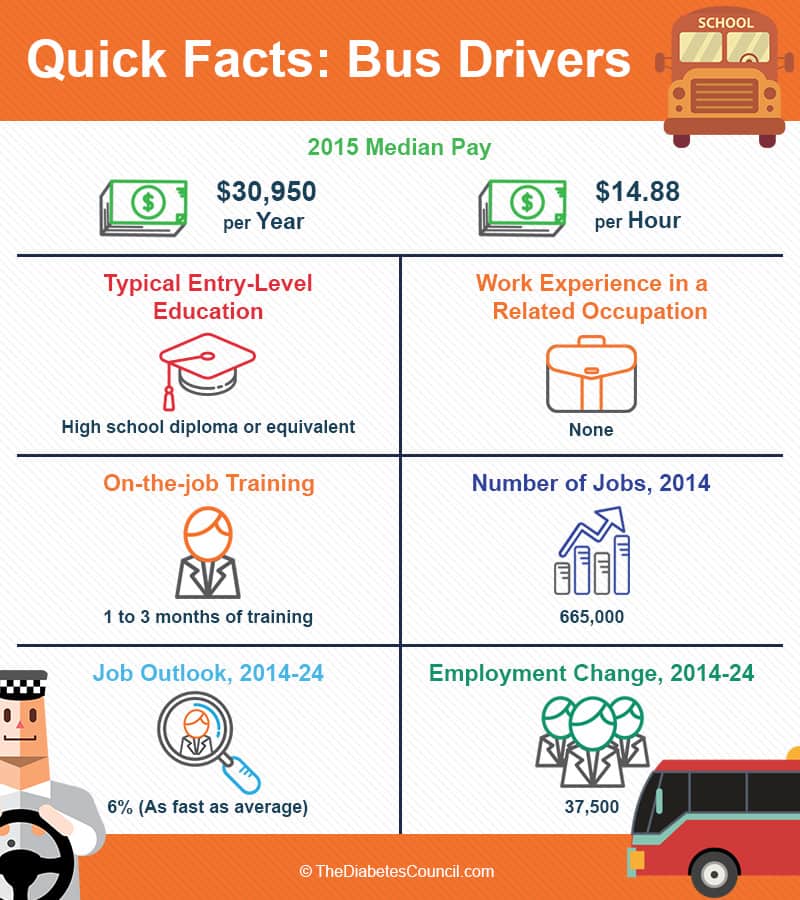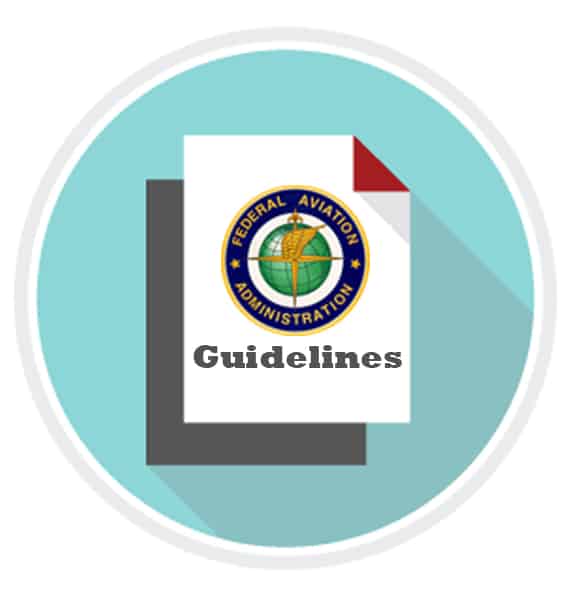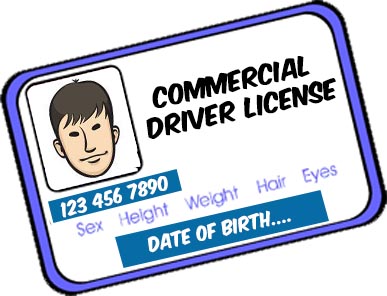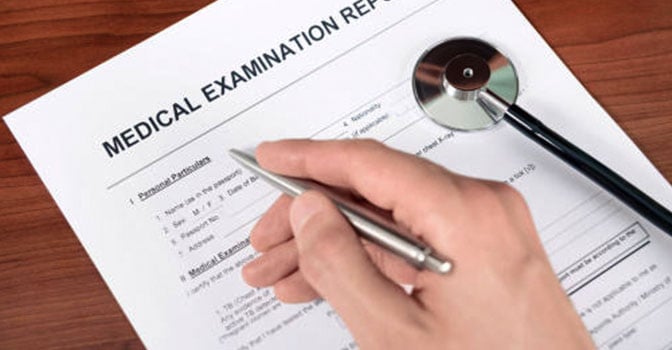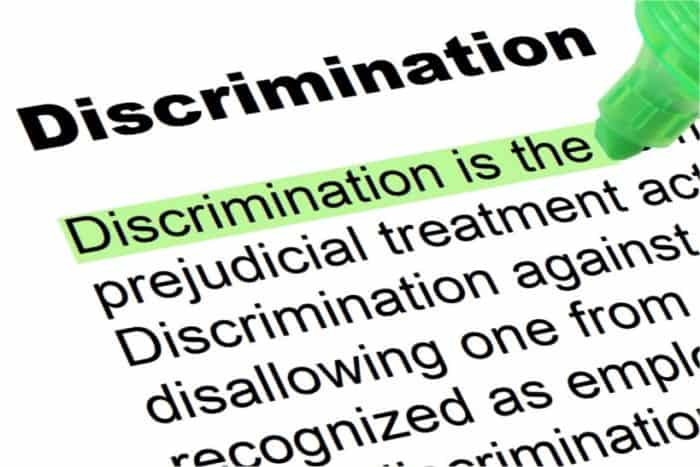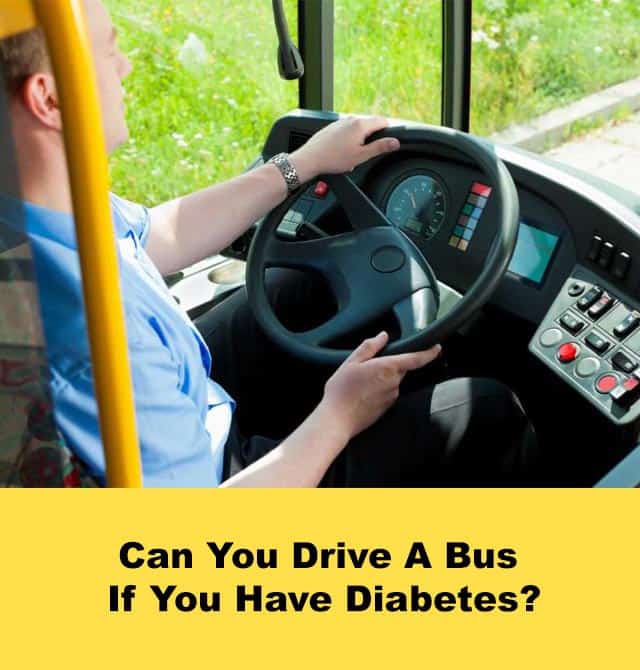
Karen contacted TheDiabetesCouncil to find out if she could pursue a career by becoming a bus driver. Because she has diabetes and she was not sure what the process was to pursue this career, she turned to us for help. We had good news for Karen.
Contents
- The good news
- Obtaining a Commercial Driver’s License (CDL)
- Example – Minnesota’s Regulations
- Type 2 – no insulin – Can I get a CDL?
- Exception to the Rule- Insulin
- History of Law from 2005
- Let’s get the wheels on the bus turning
- Discrimination and bus drivers with diabetes
- Do not take discrimination lying down
- Over to you
The good news
Yes, you can drive a school bus, or drive a commercial or transit bus if you have diabetes. You must obtain a Commercial Driver’s License (CDL) in order to drive a school bus intrastate, or to drive a transport bus across state lines (interstate). If you use insulin, you must obtain an “insulin waiver” in order to drive an interstate bus. It can get a bit confusing, so let’s break it down…
What are the requirements to drive a school bus?
To drive a school bus in the U.S., you must have a commercial driver’s license (CDL) with endorsements for driving a passenger vehicle (P) and driving a school bus (S). The specific requirements for these licenses and endorsements vary among states, so before you start the process you should check with your local driver’s license office as well as the school district where you want to work.”
What about driving for a coach line across state lines?
To drive a coach line across state lines, you have to obtain a CDL, and an “insulin waiver.” We will describe what a CDL or Commercial Driver’s License is, and we will look at intrastate versus interstate bus driving. We will talk about how you can look up the guidelines in your state for driving a bus; we will then look at one state’s guidelines as an example.
Obtaining a Commercial Driver’s License (CDL)
What is a Commercial Motor Vehicle?
The Federal Motor Carrier Safety Administration (FMCSA) defines the term commercial motor vehicle or CMV. CMV “as any self-propelled or towed motor vehicle used on a highway in interstate commerce to transport passengers or property when the vehicle is”:
Intrastate vs. interstate driving
Not too much commercial driving is considered as intrastate driving (driving within the state as opposed to driving across state lines). Even if you are only driving within the boundaries of one state and the vehicle carries goods or passengers that will be eventually be transported over state lines, it is still considered interstate driving. All interstate driving requires a CDL, and subsequent insulin waiver if you use insulin for your diabetes.
Driving for Greyhound, for example, where you often transport passengers across state lines would require a CDL and/or insulin waiver, but driving a bus for a school district within state lines seems like it might not require a CDL. However, all states do require a CDL to operate a school bus despite the fact that you are not crossing state lines.1
If you don’t want to cross any state lines, then you can get approved to drive a commercial vehicle in your state if you have diabetes and it is well-managed. You could also drive a school bus or a city transit bus. Drivers within state lines need not apply for the Federal Diabetes Exemption if they use insulin. It is only if you plan to drive a bus across state lines that you will need a Federal Diabetes Exemption, more commonly called an “insulin waiver.”
I suggest reading the following articles:
Two states in court
North Carolina and Arizona refused to allow a person with diabetes to drive a school bus back in 1998. The court case was decided with the plaintiffs, and it was found that both states are unable to discriminate against school bus drivers solely based on their diagnosis of diabetes.2
Each state has its own rules and regulations for driving a bus, and these rules also vary from state to state. You can look up your state’s guidelines here at the American Diabetes Association’s website: http://www.diabetes.org/living-with-diabetes/know-your-rights/discrimination/drivers-licenses/drivers-license-laws-by-state.html.
For one example of a state’s application for obtaining a CDL, you may view the state of Minnesota’s here: https://dps.mn.gov/divisions/dvs/forms-documents/Documents/CDL-Sbus-DiabeticWaiver-Packet.pdf
Example – Minnesota’s Regulations
Let’s look at what the process is for driving a bus in the state of Minnesota:
Minnesota’s form gives you directions on how you can obtain a CDL if you want to drive a school bus or Type III school bus in Minnesota. It includes information about the medical examiner’s report for commercial driver fitness, insulin waiver application form, medical evaluation form, and vision evaluation form to be filled out by an ophthalmologist or optometrist.
Section B, Maintenance Requirements Information, in the Minnesota form, outlines what you must do in order to maintain your waiver if you are granted one to drive a school bus or Type III school bus in Minnesota:
- “Carry, use and record, in a log, the readings from a portable self-monitoring blood glucose device equipped with a computerized memory.
- Carry and use when on duty, as necessary, a source of rapidly absorbable glucose.
- Carry insulin and the equipment or materials necessary to administer the medication.
- Report, in writing within 15 calendar days to the Minnesota Department of Public Safety, Driver and Vehicle Services (DVS), any citation for a moving traffic violation involving the operation of a school bus or Type III school bus, along with a photocopy of the citation.
- Report the judicial or administrative disposition of any citation for a moving violation involving a school bus or Type III school bus no later than 15 days following notice of disposition.
- Report, in writing to DVS, involvement in any accident whatsoever while operating a school bus or Type III school bus no later than 15 days following the accident. You must include any State, insurance company, or motor carrier accident reports and any attending physician's and laboratory reports of treatment arising from the accident.
- Submit a signed statement from an ophthalmologist to DVS no later than 15 days before the renewal date of the waiver and endorsement that indicates the applicant was examined within the six-week period immediately preceding the renewal date of the waiver, was found not to have unstable proliferative diabetic retinopathy, and has stable visual acuity of at least 20/40 Snellen in each eye, corrected or uncorrected.
- If you do not comply, your school bus endorsement on your driver's license will be revoked or canceled or your privilege to operate a Type III school bus will be canceled.” 3
Type 2 – no insulin – Can I get a CDL?
Interstate driving
If you have Type 2 diabetes, simply follow your state specific guidelines. You do not need to file for a Federal Diabetes Exemption, or “Insulin waiver.” This CDL will allow you to cross state lines. If your Type 2 diabetes gets worse, and your doctor puts you on insulin, then you will need to file for a Federal Exemption Waiver for interstate driving.
Intrastate driving
If you are driving only in your state, you will have to complete paperwork specific to your state, as in the example for Minnesota above. Please note that state guidelines can vary considerably.
Exception to the Rule- Insulin
Applying for exemption if you take insulin
If you have diabetes, and take insulin to treat it, under federal law, you must apply for an exemption from the Federal Motor Carrier Safety Administration (FMCSA) to drive an interstate bus.
You can visit the FMCSA website, https://www.fmcsa.dot.gov/, and download the application for the diabetes exemption.
As part of the diabetes exemption process, you will be evaluated by an endocrinologist, an eye doctor, and a certified medical examiner. Each of these doctors will complete a form where they will describe your diabetes, how well it is managed, and why you should be allowed to drive commercially and obtain a CDL.
Unfortunately, this is a long process. Estimated time response for a “yes,” or a “no” can take up to 180 days, or six long months. The exemption lasts for two years. You can learn more about the driver exemption program to obtain a CDL when you use insulin for your diabetes by visiting: http://www.
diabetes.org/living-with-diabetes/know-your-rights/discrimination/drivers-licenses/commercial-drivers-and-diabetes-discrimination/faqs-about-commercial-drivers-licenses.html.(1)
History of Law from 2005
The following contains excerpts from a previous post, Commercial Truck Driving and Diabetes: Everything you need to Know
Since 2005, a person with diabetes who takes insulin has had a path to obtain a CDL for interstate driving (buses, trucks). Before this, there was a blanket ban for insulin requiring diabetes, and they were not allowed to obtain a CDL and drive interstate.
It’s not easy
It’s possible, but not easy, to obtain a CDL for interstate bus driving. There are some hoops you have to jump through. Still, it’s much better that there is now a path for a person with diabetes to follow if they want to drive a bus interstate. Back before this change, it was nearly impossible to obtain a CDL if you took insulin for your diabetes. The FMCSA started to provide assessments of those with Type 1 and Type 2 diabetes taking insulin for interstate driving on a case-by-case basis as early as 2003, provided that they met all conditions for driving while taking insulin.
The criterion is not as strict as one might think, keeping in mind that those with existing complications of diabetes, or those with an A1C that is high, generally above a 10, may not be able to go through the process.
The process is very long and can take up to 180 days or longer if they find that the applicant has left out information needed to make a confirmed assessment. Some sources have sited 9 months to 1 year of wait periods, due to back log of paperwork with the cumbersome process.
Let’s get the wheels on the bus turning
Obtaining a FMCSA Diabetes Waiver
First, you can print the 12 page Federal Diabetes Exemption Program packet here: https://www.fmcsa.dot.gov/sites/fmcsa.dot.gov/files/docs/Diabetes_Exemption_Package0706.pdf
Jump, jump, jump through the federal hoops
For starters, an applicant for the Federal Diabetes Exemption or waiver with Type 1 diabetes will need to be taking their insulin for at least 2 months prior to applying for the exemption. A person with Type 2 diabetes must have been taking their insulin for one month. A required physician evaluation that should be conducted by a licensed “medical examiner” is listed on the FMCSA’s National Registry. Other evaluations may include tests conducted by an endocrinologist and ophthalmologist or optometrist. In addition, the following is a list of medical criteria that must be met:
The person with diabetes must not have had one or more hypoglycemic episodes in the past 12 months, or 2 or more occurrences in the past 5 years resulting in:
- Seizure
- Loss of Consciousness
- Need for Assistance from another person
- Period of Confusion
The person with diabetes must not have signs of end organ damage including:
- Retinopathy
- Macular Degeneration
- Peripheral Neuropathy
- Congestive Heart Disease
- Stroke
- Peripheral Vascular Disease
- Kidney Failure
The diabetes package should contain:
- Diabetes Exemption Application
- Quarterly Endocrinologist Evaluation Form for Already Exempted Drivers
- Annual Diabetes Assessment Package for Already Exempted Drivers
Medical Examination Requirements:
The Department of Transportation (DOT) physical examination must be conducted by a licensed “medical examiner” listed on the Federal Motor Carrier Safety Administration (FMCSA) National Registry. The following may provide the DOT physical examination:
- doctors of medicine (MD)
- doctors of osteopathy (DO)
- physician assistants (PA)
- advanced practice nurses (APN)
- Doctors of chiropractic (DC).
Follow this link to find a medical examiner who is certified by the FMCSA to perform DOT physical exams:https://nationalregistry.fmcsa.dot.gov/NRPublicUI/Drivers.seam.
A DOT physical exam is valid for up to 24 months. The medical examiner may also issue a medical examiner’s certificate for less than 24 months when it is desirable to monitor a condition, such as diabetes or high blood pressure. The Federal Diabetes Exemption is good for 1 year. A Medical Examiner’s Certificate is issued if the medical examiner finds that the person with diabetes is physically fit to operate a commercial vehicle, and the applicant is given a copy of the certificate.
There are 57 screenings that a person with diabetes taking insulin injections must pass in order to obtain the Federal Diabetes Exemption from FMCSA. Once obtained, the Federal Diabetes Exemption is good for one year, although some medical exemptions may be good for 24 months. At the end of the year, if the person does not meet the criteria on re-application, they are then not allowed to operate a commercial vehicle for interstate busing. As one’s diabetes worsens, or as short and long term complications arise, a bus driver with diabetes taking insulin may find that they are unable to continue on their current career path. If they are unable to meet the requirements for exemption each year, they may be faced with the reality of being pulled off the road due to worsening diabetes. This can cause great hardship for a bus driver and their family, who may not have other means of sustaining their livelihood.
As of 2004, the DOT Medical Examinations that are administered to those wanting to obtain a CDL for interstate bus drivers have become stricter. This is because a number of prior unmentioned medical conditions were added to the list that could render a driver unsafe to be on the road. High blood pressure, sleep apnea, and of course, diabetes were on the list. Persons with diabetes who wish to enter the bus driving industry should ask themselves if they would be able to manage their disease with all of the challenges that comes with it while being on the road. They should also prepare themselves for a possibility of being taken off the road due to worsening diabetes and acute or chronic complications that make driving a commercial vehicle unsafe. With organization and planning, life on the road as a diabetic taking insulin is possible.
In the event if or when bus drivers are taken off the road, they are put on FMLA. The Family Medical Leave Act protects them from losing their job for 12 weeks. However, because the Federal Diabetes Exemption takes up to 180 days, some bus drivers would have lost their jobs in the time between when their FMLA runs out, and the time when they obtain the waiver. It may be possible to seek help from the American Diabetes Association related to discrimination cases if jobs are lost while waiting on the Federal Diabetes Exemption.
Discrimination and bus drivers with diabetes
Walter Kautz had been a bus driver since 1978 with Coach USA when the American Diabetes Association wrote about his suspension from work for 2 months. Walter was suspended due to elevated glucose in a urine sample during his regular medical evaluation, which followed with a diagnosis of Type 2 diabetes.
Although Kautz was allowed to return to bus driving, his career again screeched to a halt when he was suspended three months later for an elevated A1C. Despite his record of safe driving with Coach USA for the previous 30 years, Kautz was considered by the bus company to be a safety risk to himself and others.
Coach USA had a strict blanket ban on diabetes, which is considered discriminatory. As a company regulation, to drive a bus with diabetes, a person with diabetes must have an A1C of less than 7 percent. There were other bus drivers who were being discriminated against through Coach USA, and together they worked with anti-discrimination lawyers from the American Diabetes Association.
Additional pieces to read:
In court, Kautz and other bus drivers for Coach USA, were able to site the American with Disabilities Act against blanket bans for diabetes. Over time and through many court battles, Coach USA has changed their policies related to bus drivers and diabetes, and removed the blanket bans.
Do not take discrimination lying down
You can make a difference when it comes to the discrimination of people with diabetes. Take a stand. You will be helping to pave the road, whereby other people with diabetes may experience less discrimination later on.
Call 1-800-DIABETES (1-800-342-2383), if you feel that you are being discriminated against on the job with diabetes.
Over to you
Career articles for people with diabetes are very challenging to write about. The information sources are many and the information itself is confusing. I am a public health nurse, certified diabetes educator, and blogger for TheDiabetesCouncil. I do not profess to be an expert on transportation issues, or issues pertaining to discrimination law. I would like to ask that anyone who can provide information to clarify the process of becoming a bus driver with diabetes, please do so in the comments section below. Readers, especially those who have succeeded in conquering the complex process of becoming a bus driver with diabetes, add so much to our posts.
TheDiabetesCouncil Article | Reviewed by Dr. Sergii Vasyliuk MD on June 04, 2020
References
- http://www.diabetes.org/living-with-diabetes/know-your-rights/discrimination/drivers-licenses/commercial-drivers-and-diabetes-discrimination/faqs-about-commercial-drivers-licenses.html
- http://www.diabetes.org/living-with-diabetes/know-your-rights/discrimination/drivers-licenses/commercial-drivers-and-diabetes-discrimination/school-bus-licenses.html
- https://dps.mn.gov/divisions/dvs/forms-documents/Documents/CDL-Sbus-DiabeticWaiver-Packet.pdf
- http://www.diabetesforecast.org/2014/08-aug/bus-drivers-fight.html


